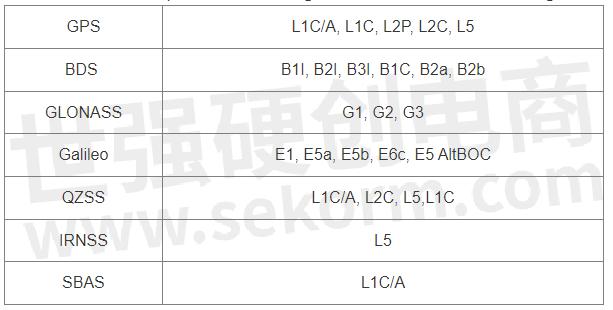How does GNSS module affect RTK performance in the field?

The main function of the high-precision positioning GNSS module is to convert the received satellite signals into position information. As for GNSS receiver, it is a terminal equipment which is developed on an intelligent GNSS motherboard. GNSS receiver’s intelligent motherboard includes a GNSS module, functional modules like IMU, data transmission modules (4g, Bluetooth, radio, wifi), etc, of which GNSS module is at the heart of GNSS receiver.
A GNSS receiver’s accuracy, stability and anti-interference mainly determined by a GNSS module’s various attributes such as supported signal types and quantities, speed and stability of satellite tracking, quality of original observations, positioning accuracy, etc. Thus, the better performance of a GNSS module will definitely enhance the performance of a GNSS receiver.
More signal frequency support will bring more stable performance.
The new triple-frequency GNSS module is becoming more and more popular and has become a mainstream product in the market. Compared with the previous generation of dual-frequency GNSS products, the triple-frequency GNSS module can track more satellite signals. GNSS receiver integrated with this kind of GNSS module can outperform in much more complex environment and provide more stable positioning services.
◆ ComNav’s latest K8 series module adds Beidou-3 signal mechanism support, fully supporting all functions and features of Beidou-3, making GNSS receiver with this module capable of searching more satellites and better signal.

◆ The QUANTUM III SoC chip embedded in K8 series modules has achieved significant improvement in performance and technology with 965 tracking channels. Adopted 40 nanometer process, this chip achieve high integration and low power consumption.
On the basis of K8 GNSS module, ComNav continuously optimizes GNSS receiver’s intelligent motherboard. The newly released N2 GNSS receiver has fully supported the L3 band of various satellite systems. In the surveying application scenario, the test results show that N2 GNSS receiver can quickly achieve centimeter level positioning accuracy in dense forests, buildings and other scenes. Even under the condition of 60KM ultra long baseline, N2 GNSS receiver can still maintain high-precision positioning and the fix rate is 100%. N2 combines advanced algorithm, prototype structure and some other aspects to enhance the signal capture capability, as well as the fixed speed and channel number of RTK. All these improvements speed up the measurement efficiency in a large extent.
Facing the new opportunities brought by the integration of Beidou, 5G and other technologies, ComNav will continue to working on high-precision technical innovation and striving to achieve low cost and high performance GNSS modules so that more investment is attracted to accelerate the scale and industrialization of GNSS chips and boards in the field of surveying and mapping, drone, and precision agriculture.
- +1 Like
- Add to Favorites
Recommend
- The Magic Behind RTK: Delivering Unparalleled Positioning Precision
- Recommend Commands for System Integration
- How to Active the Event Option for Your GNSS Module K8 series from ComNav Technology
- ComNav‘s K8 Series GNSS Module can track the Galileo E6b signal and Has Verified the HAS Service in Most Countries
- Lighter, Thinner, Faster - ComNav Technology Introduced T20 Palm RTK
- How to Enable GNSS+INS System on ComNav K8 Series GNSS Modules
- ComNav Technology Launched GNSS High Precision Positioning Solution for Lawn Mower
- ComNav Technology‘s Z30 Portable GNSS Receiver: Precision in Your Pocket
This document is provided by Sekorm Platform for VIP exclusive service. The copyright is owned by Sekorm. Without authorization, any medias, websites or individual are not allowed to reprint. When authorizing the reprint, the link of www.sekorm.com must be indicated.






























































































































































































































































































































































































































































































































































































































































































































































































































































































